Physical Address
304 North Cardinal St.
Dorchester Center, MA 02124
Physical Address
304 North Cardinal St.
Dorchester Center, MA 02124
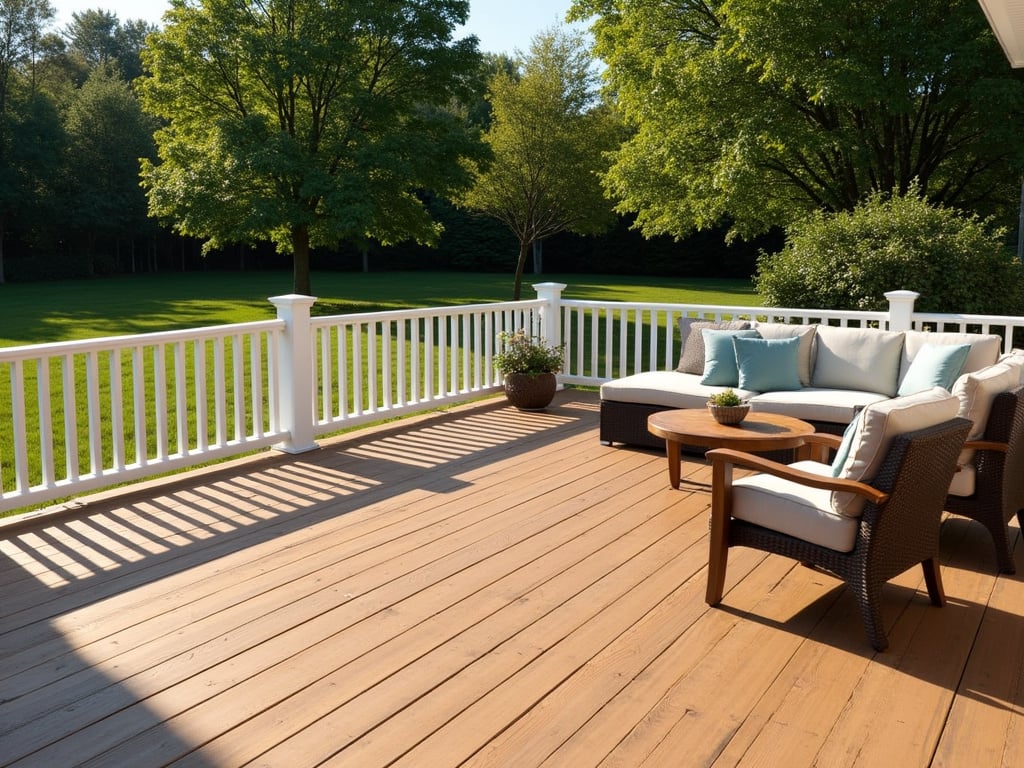
Recent studies show that homeowners who invest in thoughtfully designed outdoor spaces see up to a 75% return on their investment. When it comes to transforming your deck, the railing isn’t just a safety feature – it’s an opportunity to make a striking design statement. As we explore these innovative deck railing ideas, you’ll discover how this often-overlooked element can become the defining feature of your outdoor sanctuary.
According to architectural historians, spindle railings have graced homes for over two millennia, with their origins tracing back to ancient Greek architecture. This enduring design continues to captivate homeowners today, offering a perfect blend of safety and sophisticated style. The vertical alignment of wood spindles creates a rhythmic pattern that naturally draws the eye while providing crucial safety barriers.
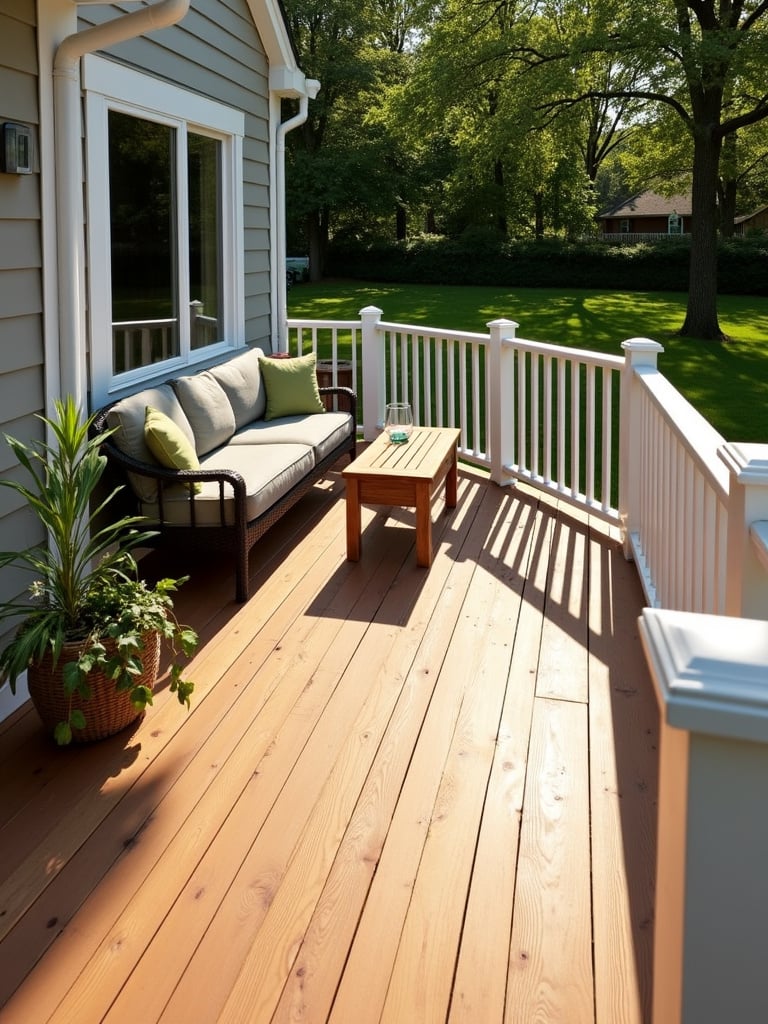
The versatility of wood spindle railings is particularly noteworthy in modern applications. By selecting different wood species or applying various stains and paints, you can create anything from a crisp, contemporary look to a weathered, rustic appearance. Cedar and redwood are particularly popular choices, offering natural resistance to decay and insect damage while developing a beautiful patina over time.
Whether you’re restoring a Victorian-era home or adding character to a new build, this deck railing idea offers timeless appeal that transcends passing trends.
In the realm of contemporary deck railing ideas, horizontal cable systems represent a perfect marriage of form and function. Research in environmental psychology suggests that unobstructed views of nature can reduce stress and improve overall well-being. Cable railings capitalize on this principle by creating nearly invisible barriers that maintain safety while maximizing visual connection with the surrounding landscape.
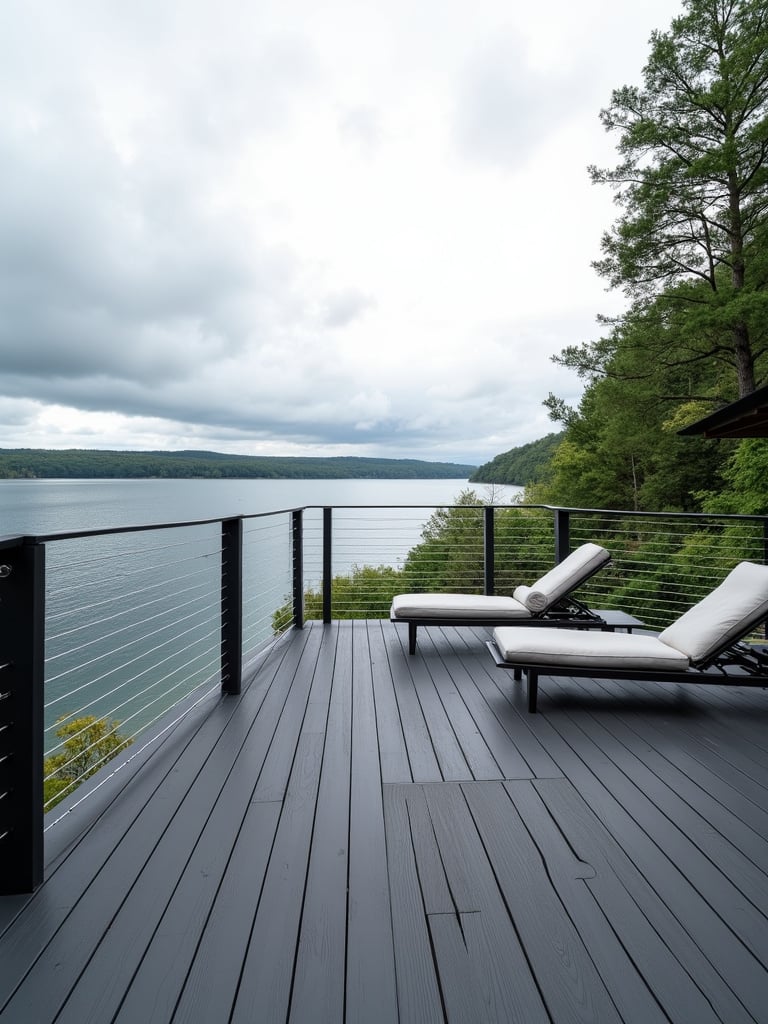
The engineering behind cable railings is fascinating: marine-grade stainless steel cables, typically ranging from 1/8″ to 3/16″ in diameter, are tensioned between posts to create a sturdy yet visually lightweight barrier. This system can span longer distances between posts compared to traditional balusters, creating clean lines that complement modern architecture. A study of contemporary home design trends reveals that horizontal cable railings are particularly popular in homes with panoramic views, where preserving sight lines is paramount.
For those considering this modern approach to deck railing, the key lies in the details of installation and maintenance.
The integration of glass panel railings represents one of the most innovative deck railing ideas in modern outdoor design. These transparent barriers create an almost magical effect, seeming to disappear entirely while providing robust protection. Recent advancements in glass technology have made these systems increasingly practical for residential use, with tempered and laminated options offering exceptional durability and safety.

Consider this remarkable statistic: tempered glass panels used in deck railings are typically four to five times stronger than regular glass and, when broken, shatter into small, rounded pieces rather than dangerous shards. This engineering marvel allows homeowners to enjoy uninterrupted views while maintaining peace of mind about safety. The transparency of glass railings also has a practical benefit: studies show that spaces appear up to 30% larger when clear barriers are used instead of solid ones.
The aesthetic versatility of glass panel railings extends beyond their basic functionality.
Among contemporary deck railing ideas, metal rod systems stand out for their architectural purity and structural elegance. These railings exemplify the modernist principle that “less is more,” creating boundaries with minimal visual interference. Research in design psychology indicates that simple, clean lines can create a sense of calm and order in outdoor spaces.
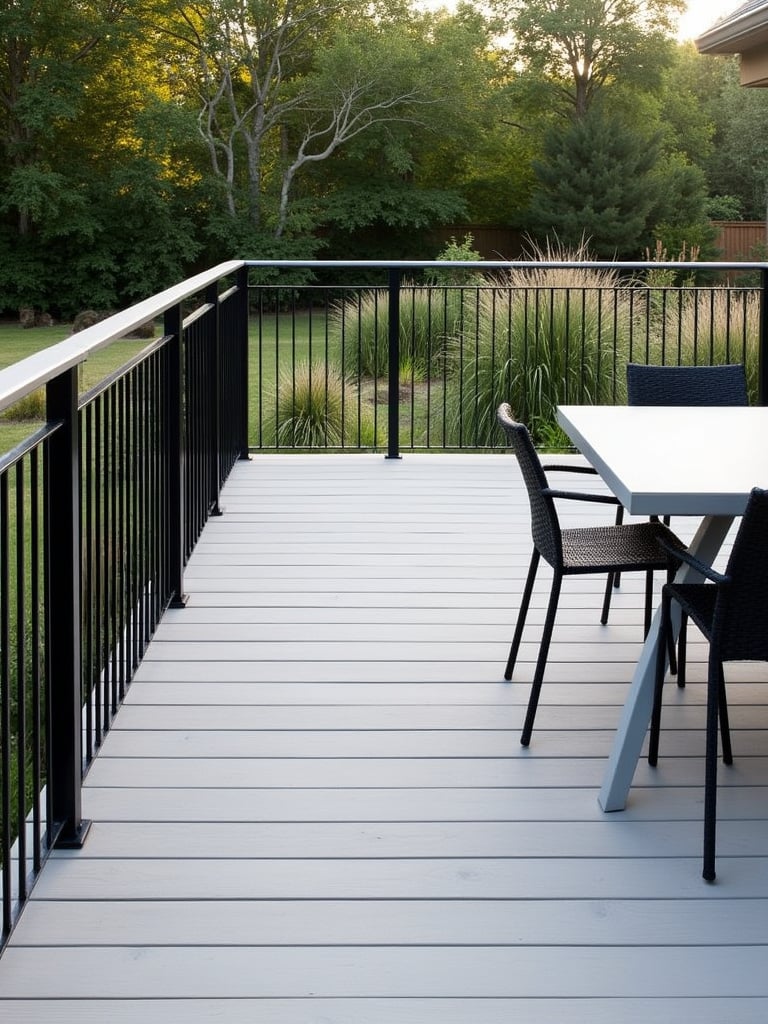
The engineering behind metal rod railings is deceptively sophisticated. Each rod, typically crafted from powder-coated aluminum or stainless steel, is precisely positioned to create a pattern that’s both visually pleasing and structurally sound. The spacing between rods is carefully calculated to meet safety codes while maintaining an open, airy feel. What’s particularly interesting is how these railings affect our perception of space – studies show that vertical rod patterns can make areas appear taller, while horizontal arrangements can visually extend the width of a deck.
As we consider the practical aspects of metal rod railings, their durability becomes a compelling feature.
The artistry of wrought iron railings represents one of the most sophisticated deck railing ideas in traditional design. Historical records show that wrought iron craftsmanship reached its zenith during the Victorian era, when blacksmiths created elaborate patterns that turned functional barriers into works of art. Today, these techniques continue to inspire modern interpretations that blend classical beauty with contemporary durability.
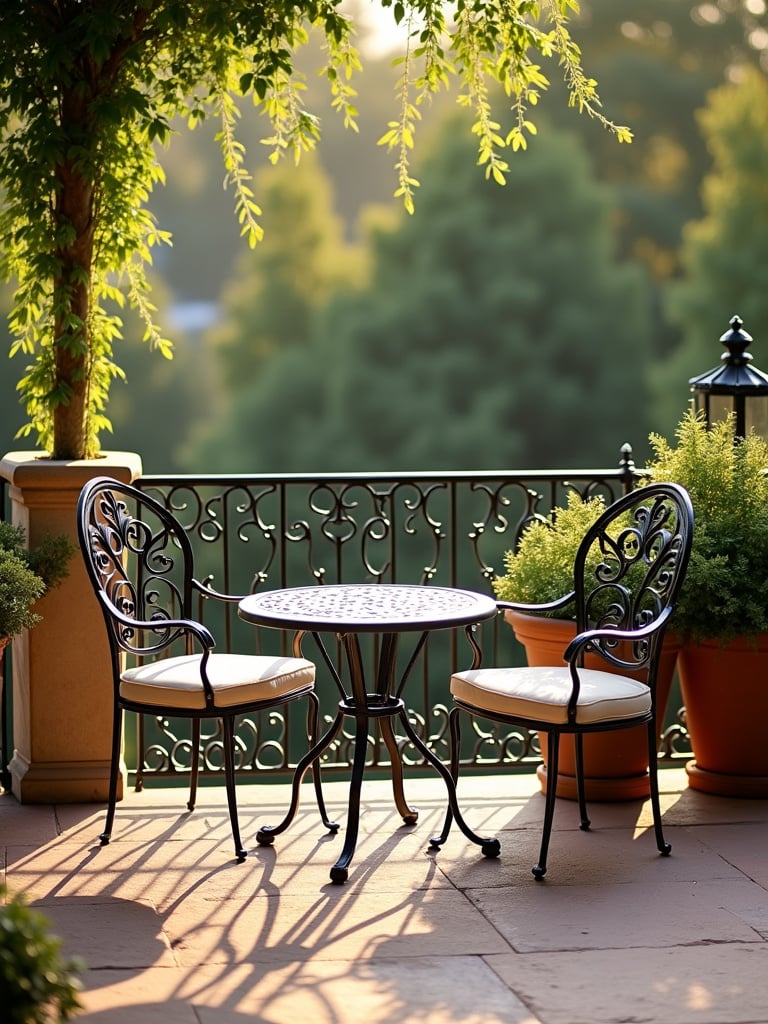
The versatility of wrought iron is particularly evident in its ability to be shaped into intricate designs. From flowing scrollwork to geometric patterns, each railing can be customized to tell its own story. Metallurgical studies indicate that properly maintained wrought iron railings can last for generations, developing a distinctive patina that adds character over time. As one master blacksmith notes, “Every curve and scroll in wrought iron tells a story of both artistic vision and engineering precision.”
The timeless appeal of wrought iron extends beyond its decorative qualities.
In the evolution of deck railing ideas, composite materials represent a significant technological advancement. Environmental impact studies show that composite railings, typically made from a blend of recycled plastic and wood fibers, can prevent thousands of pounds of waste from entering landfills while providing exceptional durability. This innovative material offers the aesthetic appeal of wood without its maintenance demands.
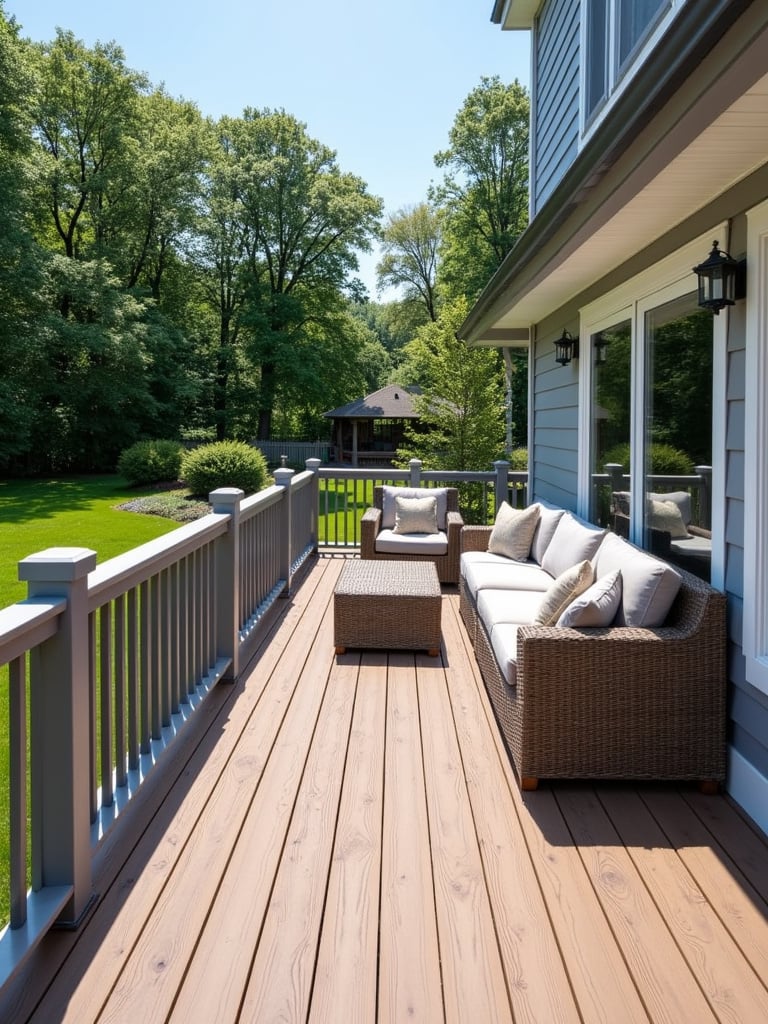
The science behind composite railings is fascinating. Advanced polymer technology allows manufacturers to create materials that resist fading, warping, and insect damage while maintaining their structural integrity for decades. Research indicates that composite railings can withstand extreme temperature variations from -20°F to 130°F without significant degradation. This resilience translates to practical benefits for homeowners: a 20-year study showed that composite railings required 82% less maintenance than traditional wood railings over their lifetime.
When considering long-term value in outdoor design, composite railings present a compelling case.
Among innovative deck railing ideas, the concept of living green walls represents a fascinating fusion of functionality and biophilic design. Environmental studies demonstrate that integrating plants into our living spaces can reduce stress levels by up to 60% while improving air quality. When we incorporate planters into railing systems, we create dynamic boundaries that change with the seasons.
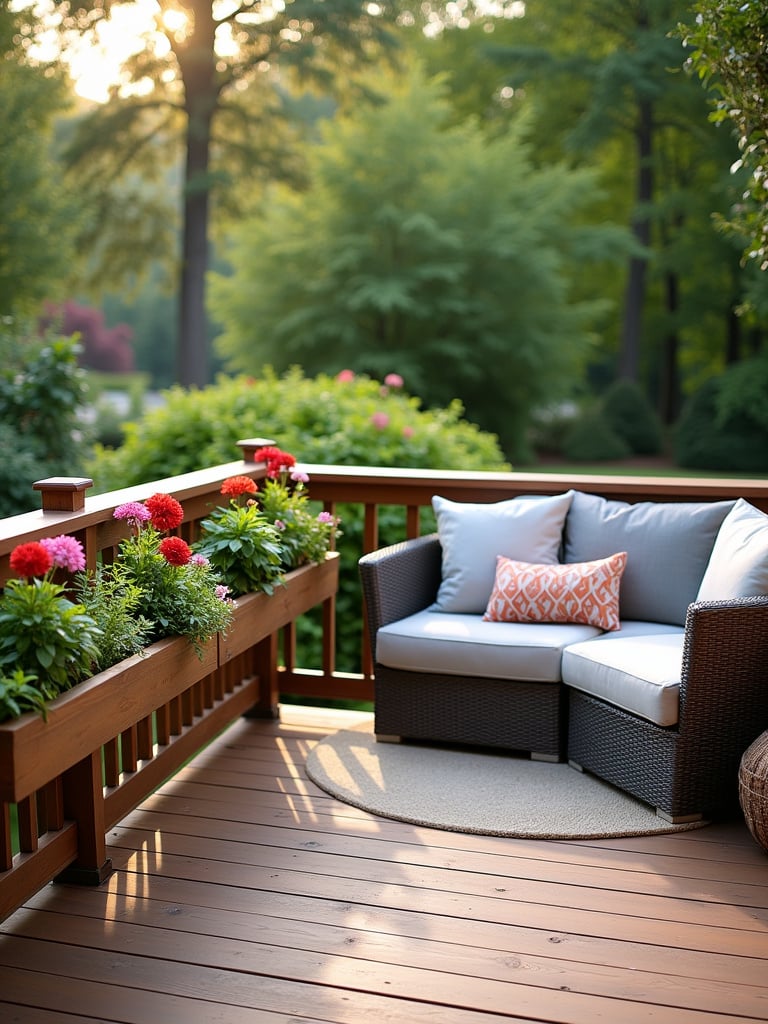
The technical considerations behind living railing systems are substantial. Proper drainage, soil depth, and plant selection all play crucial roles in success. Research from botanical gardens suggests that certain plant species are particularly well-suited for railing planters. Consider this expert-recommended selection:
The transformation of a static railing into a living garden opens up exciting possibilities.
Maritime-inspired deck railing ideas bring a distinctive coastal charm to outdoor spaces. The use of rope in railing design dates back centuries to naval architecture, where durability and functionality were paramount. Today’s rope railings combine this historical precedent with modern materials science to create stunning, seaworthy installations.
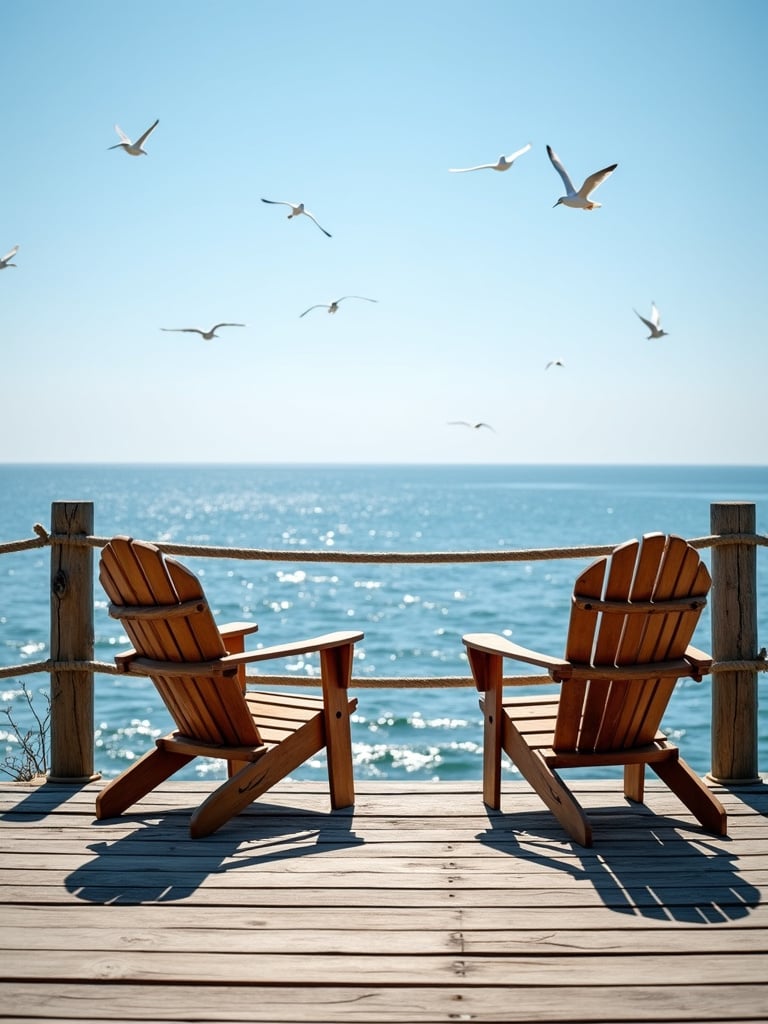
Marine-grade materials have revolutionized the possibilities for rope railings. Modern synthetic ropes offer the aesthetic appeal of natural fibers while providing superior weather resistance and durability. Engineering studies show that properly installed rope railings using 3/4″ diameter marine-grade rope can meet or exceed safety standards when properly tensioned. The tactile experience of rope railings adds an interactive element to your Deck Design – studies in sensory design indicate that varied textures can enhance our connection to outdoor spaces.
As we explore ways to bring coastal character to our outdoor spaces, rope railings offer unique possibilities.
In the realm of contemporary deck railing ideas, concrete railings represent an architectural statement that challenges traditional perceptions. Studies in modern architecture reveal a growing trend toward monolithic design elements, with concrete railings emerging as a bold choice for homeowners seeking to make a dramatic impact. The visual weight of concrete creates a striking contrast with lighter deck materials, establishing a powerful presence in outdoor spaces.
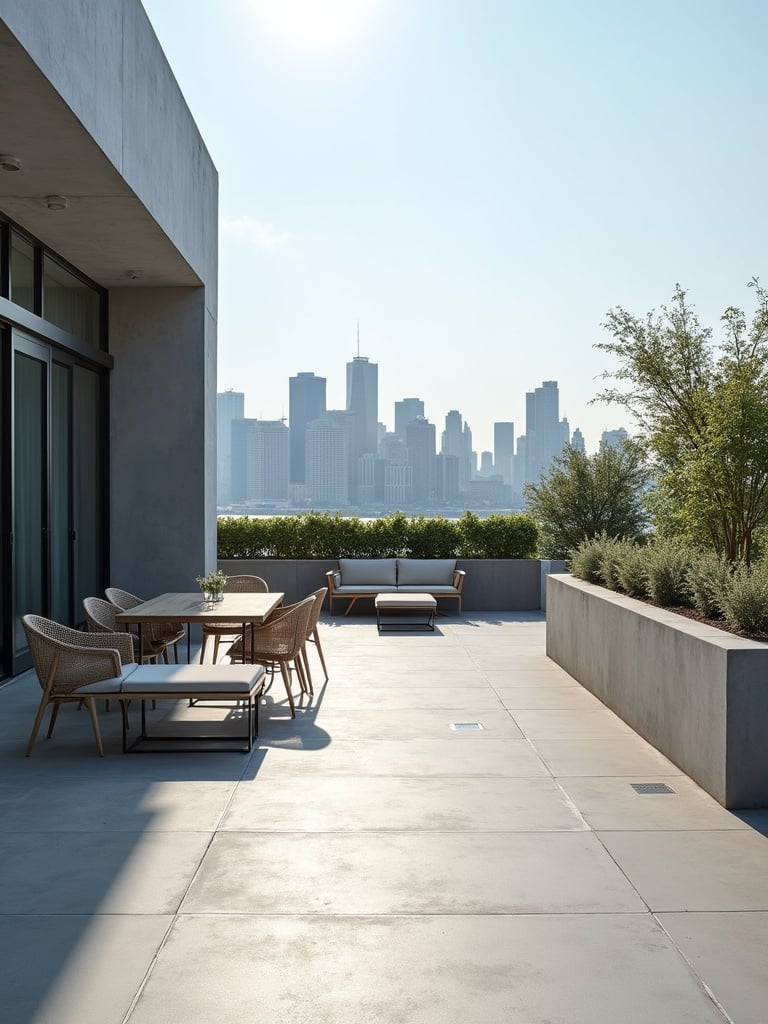
Recent advances in concrete technology have revolutionized what’s possible with this versatile material. Modern concrete mixtures can be engineered for both strength and beauty, with options for various textures, colors, and finishes. Research shows that incorporating additives like silica fume and superplasticizers can increase concrete’s durability by up to 40% while allowing for more refined architectural details. The ability to mold concrete into precise shapes offers unprecedented design flexibility.
The intersection of form and function in concrete railings opens up exciting possibilities for contemporary deck design.
Among popular deck railing ideas, the X-design wood railing captures the essence of farmhouse charm while providing robust structural support. Architectural historians note that this pattern, known as cross-bracing, originated in barn construction where it served both decorative and structural purposes. Today, it brings that same practical beauty to outdoor living spaces.
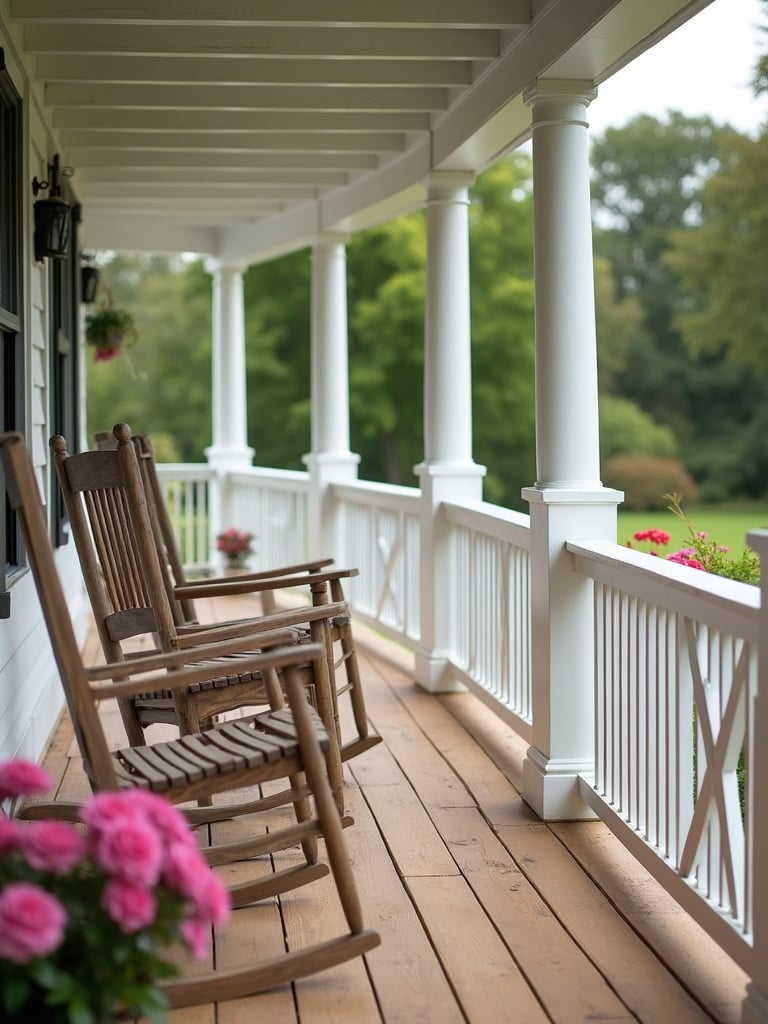
The engineering principles behind X-design railings are particularly interesting. Studies in structural dynamics show that the diagonal bracing pattern increases railing stability by up to 60% compared to standard vertical balusters. This enhanced structural integrity comes with an added bonus: the geometric pattern creates visual interest through shadow play throughout the day. As one architectural designer notes, “The X-design isn’t just about aesthetics – it’s a perfect example of form following function in the best tradition of American farmhouse architecture.”
The versatility of X-design railings extends beyond traditional farmhouse applications.
The emergence of industrial-style deck railing ideas reflects a broader trend in contemporary design that celebrates raw materials and functional aesthetics. Anthropological studies of urban renewal projects show that industrial elements like pipe railings help create a sense of authenticity and connection to a building’s historical context. This style has gained particular traction in urban environments where it complements both modern and converted industrial spaces.
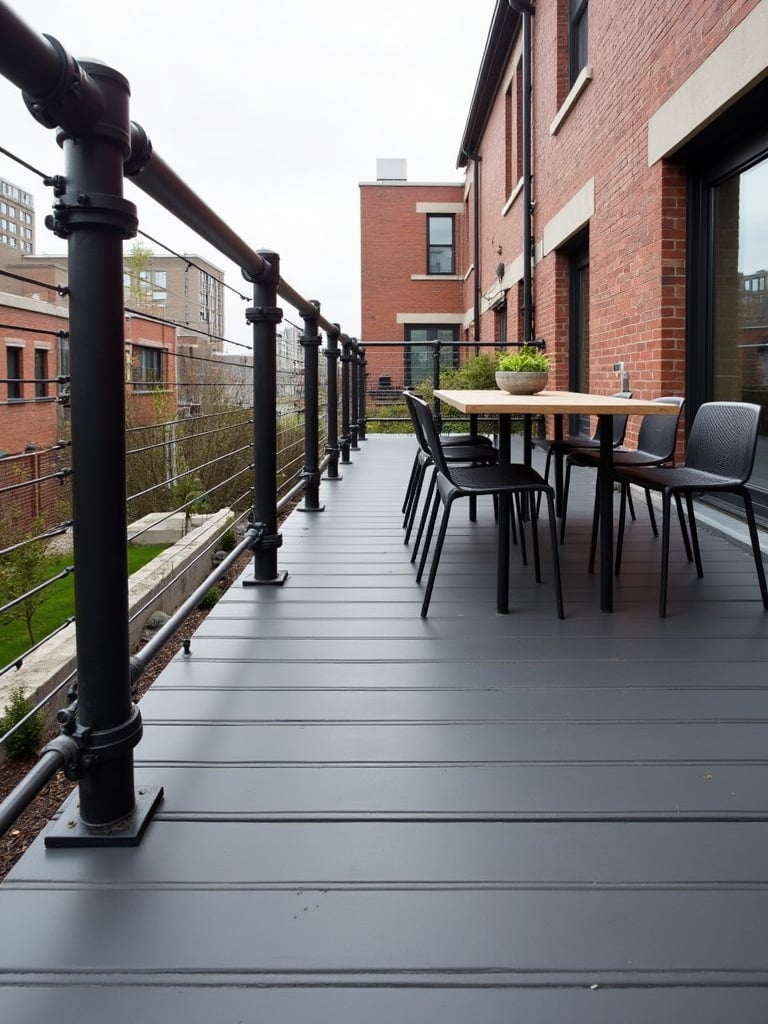
The practical advantages of pipe railings are supported by compelling data. Engineering studies demonstrate that standard industrial pipe systems can achieve impressive strength-to-weight ratios, often exceeding traditional railing materials by 25%. The modular nature of pipe fittings also allows for remarkable design flexibility. Consider these popular pipe configurations:
The industrial aesthetic continues to evolve, offering new interpretations of traditional materials.
In the evolution of deck railing ideas, pergola-topped designs represent an innovative solution to multiple outdoor living challenges. Environmental studies indicate that creating defined outdoor spaces with partial shade can extend usable outdoor time by up to 4 hours per day during summer months. Combining railing and pergola functions creates a sophisticated architectural element that serves multiple purposes.
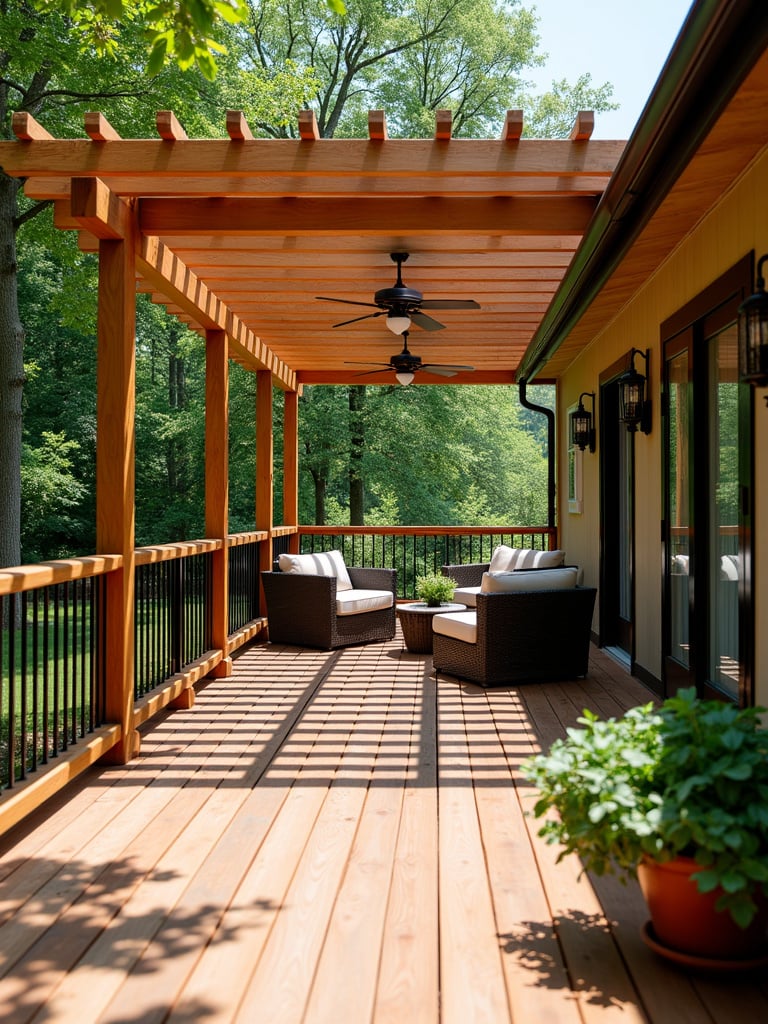
The structural engineering behind pergola-topped railings requires careful consideration of load-bearing capacity and wind resistance. Research in outdoor architecture shows that properly designed pergola-topped railings can reduce direct sunlight exposure by 75% while maintaining open sight lines and air circulation. This balance of shade and openness creates what environmental psychologists call “refuge spaces” – areas that feel both protected and connected to the surrounding environment.
The multi-functional nature of pergola-topped railings opens up new possibilities for outdoor living.
Among space-saving deck railing ideas, integrated bench seating represents a triumph of multifunctional design. Studies in spatial efficiency show that built-in seating can increase usable deck space by up to 30% compared to traditional furniture arrangements. This innovation transforms the railing from a simple barrier into an integral part of the deck’s living space.

The ergonomics of built-in bench design require careful attention to human factors. Research in seating comfort indicates optimal seat depths between 16-20 inches and heights of 16-18 inches for maximum comfort. Contemporary designs often incorporate these specifications while adding modern amenities:
The integration of comfort and functionality creates new possibilities for outdoor living.
The incorporation of LED technology into deck railing ideas represents a significant advancement in outdoor living design. Research in outdoor safety indicates that properly illuminated deck spaces can reduce accidents by up to 80% while creating an inviting atmosphere for evening entertainment. Modern LED systems offer unprecedented control over outdoor lighting scenarios.
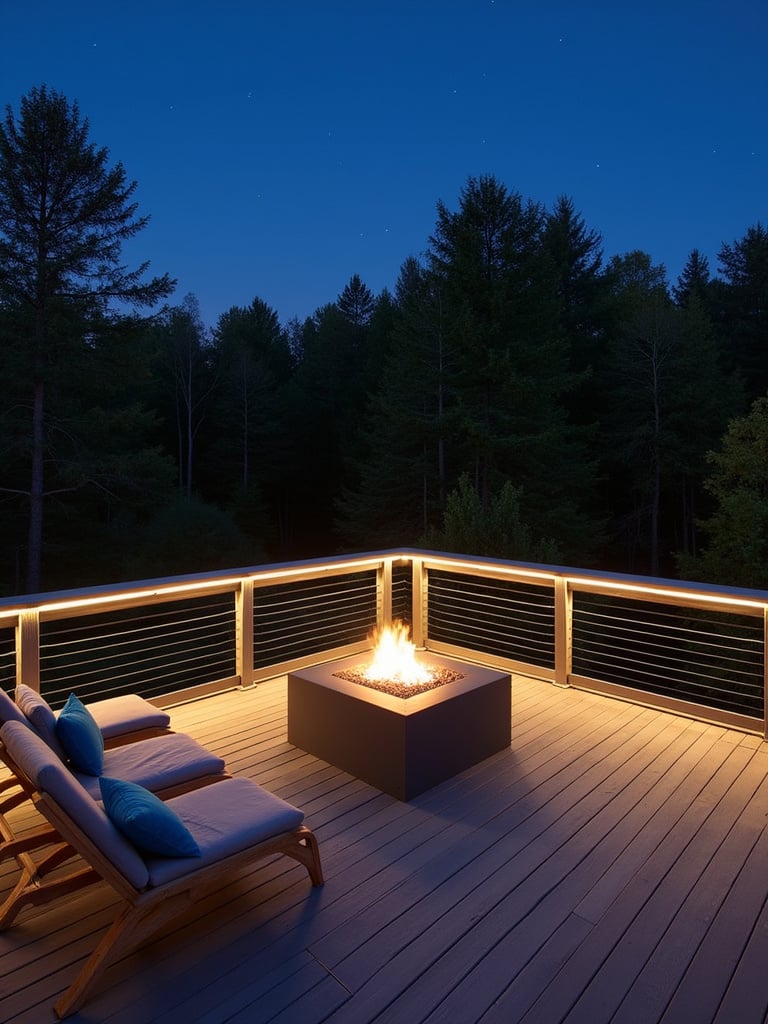
The technology behind integrated LED railing systems has evolved dramatically. Current systems consume up to 75% less energy than traditional outdoor lighting while providing more consistent illumination. Studies in environmental psychology suggest that layered lighting at different heights creates a more inviting outdoor space. Consider these lighting design principles:
The integration of lighting into railing systems continues to evolve with new technological advances.
In the realm of custom deck railing ideas, decorative metal panels represent the intersection of industrial capability and artistic expression. Advances in laser-cutting technology have revolutionized what’s possible with metal fabrication, allowing for intricate designs that would have been prohibitively expensive or impossible just a decade ago. Studies in architectural design show that personalized elements like custom metal panels can increase property value by creating unique, signature features.
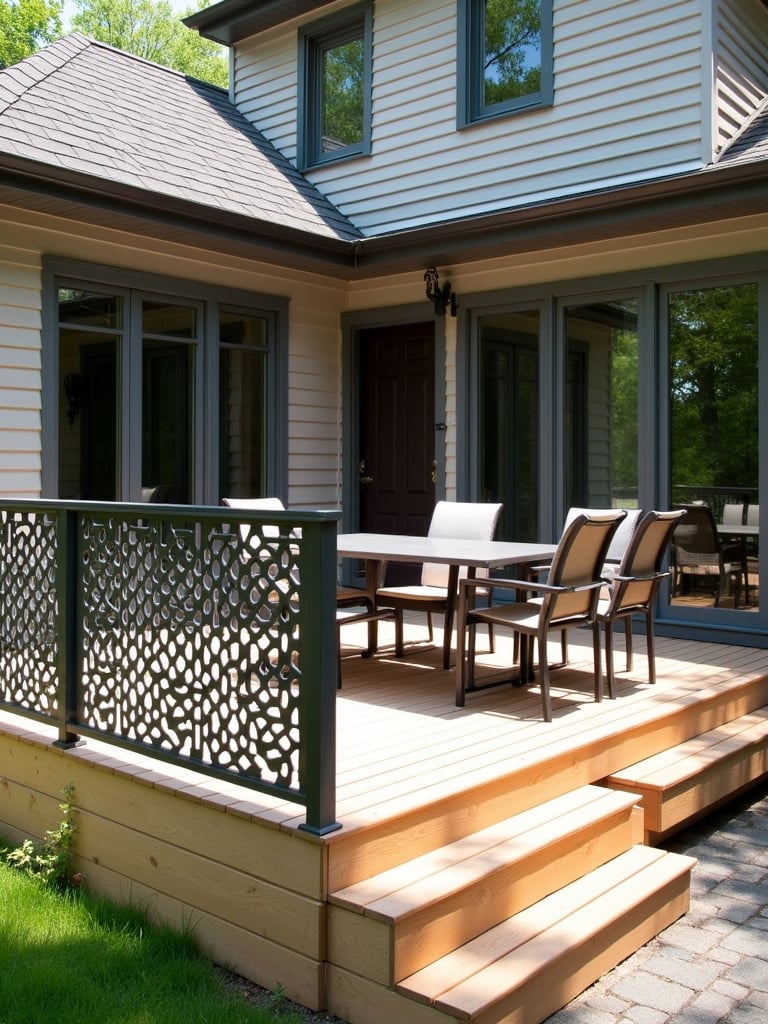
The engineering behind decorative metal panels combines aesthetic consideration with structural integrity. Modern CAD/CAM systems allow for precise calculation of panel strength while optimizing material usage. Research in materials science has led to developments in coating technologies that provide superior protection against corrosion while maintaining design detail. Expert metalworkers suggest these popular design motifs:
The possibilities for artistic expression in metal continue to expand with technological advancement.
The psychology of color plays a crucial role in modern deck railing ideas, with research indicating that thoughtfully chosen colors can significantly impact mood and perception of outdoor spaces. Studies in environmental psychology suggest that bold color choices in exterior design can increase property memorability by up to 80%. This makes painted railings an powerful tool for creating distinctive outdoor environments.
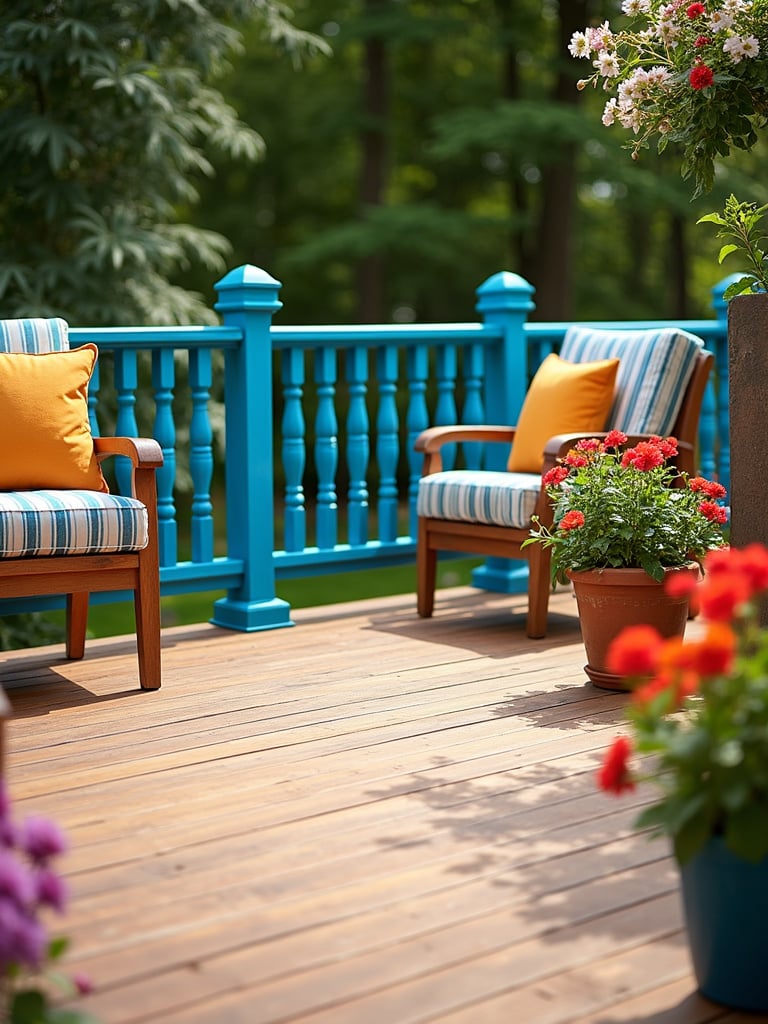
The science of exterior paint has evolved significantly, with new formulations offering unprecedented durability and color retention. Modern paint systems can maintain their vibrancy for up to 15 years with proper preparation and application. Research shows that the right color choices can:
The transformative power of color continues to inspire innovative railing designs.
The use of reclaimed wood in deck railing ideas represents a fascinating intersection of sustainability and design. Environmental impact studies indicate that repurposing wood can reduce construction-related carbon emissions by up to 50% compared to using new materials. Beyond environmental benefits, each piece of reclaimed wood brings its own history and character to your outdoor space.
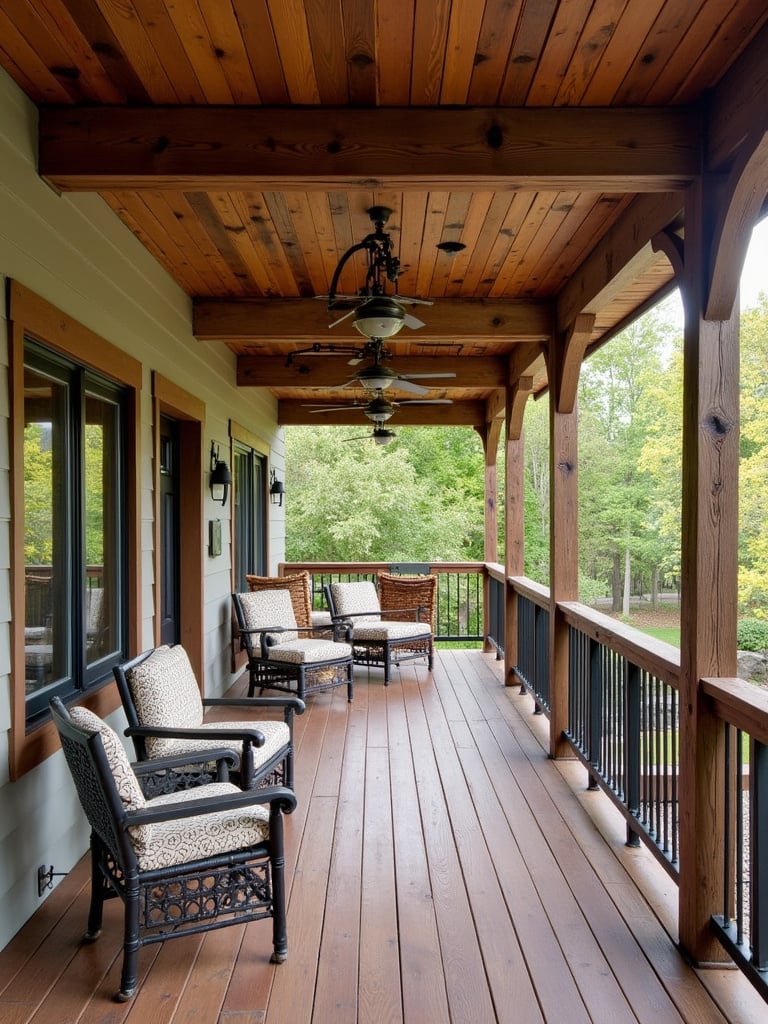
Material scientists have developed sophisticated techniques for evaluating and treating reclaimed wood to ensure its structural integrity. Research shows that properly processed reclaimed wood can actually be more stable than new lumber due to its complete curing over decades of use. The weathering process creates unique characteristics that can’t be replicated artificially:
The sustainable appeal of reclaimed wood continues to drive innovation in railing design.
Among contemporary deck railing ideas, minimalist black metal designs represent a growing trend toward refined simplicity. Studies in architectural psychology suggest that clean, uncluttered designs can reduce visual stress and create a sense of calm in outdoor spaces. The stark elegance of black metal railings provides a perfect frame for natural landscapes while maintaining a strong architectural presence.
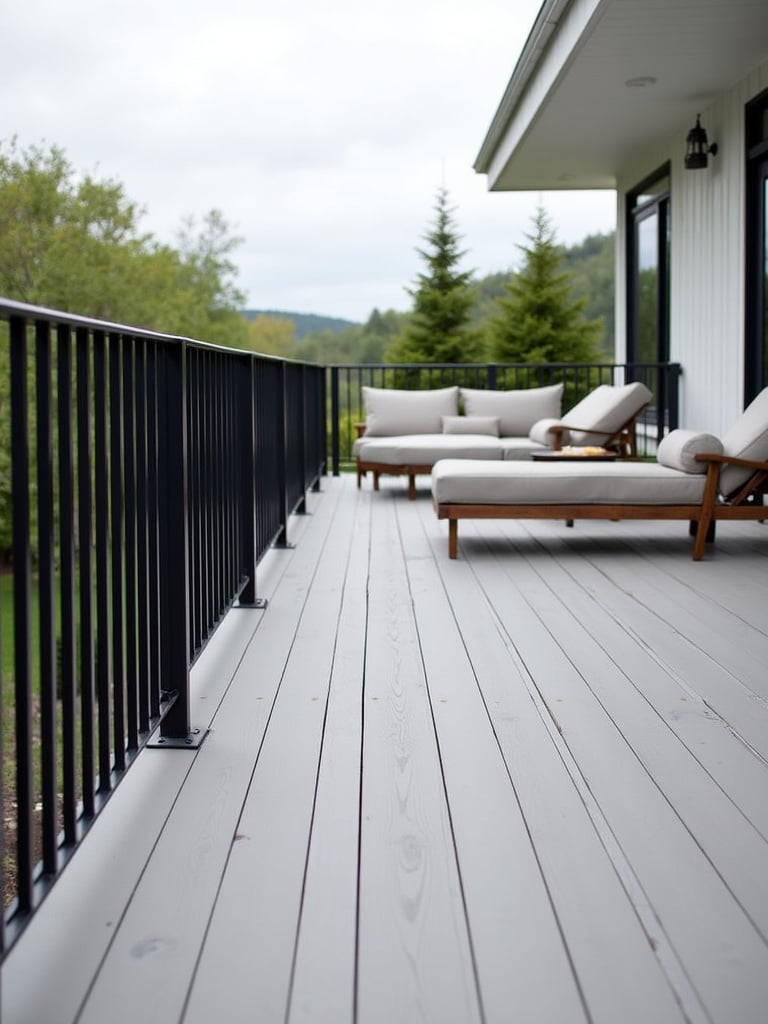
The science of powder coating has revolutionized the durability of black metal railings. Modern coating technologies can achieve up to 20 years of color stability while providing superior protection against environmental factors. Research in material engineering shows that proper powder coating can:
The enduring appeal of minimalist design continues to influence railing trends.
The enduring popularity of white picket railings among deck railing ideas reflects deep psychological associations with comfort and security. Sociological studies indicate that this classic design element continues to evoke positive emotional responses across diverse cultural backgrounds. The clean, rhythmic pattern of pickets creates a welcoming boundary that defines space without feeling restrictive.
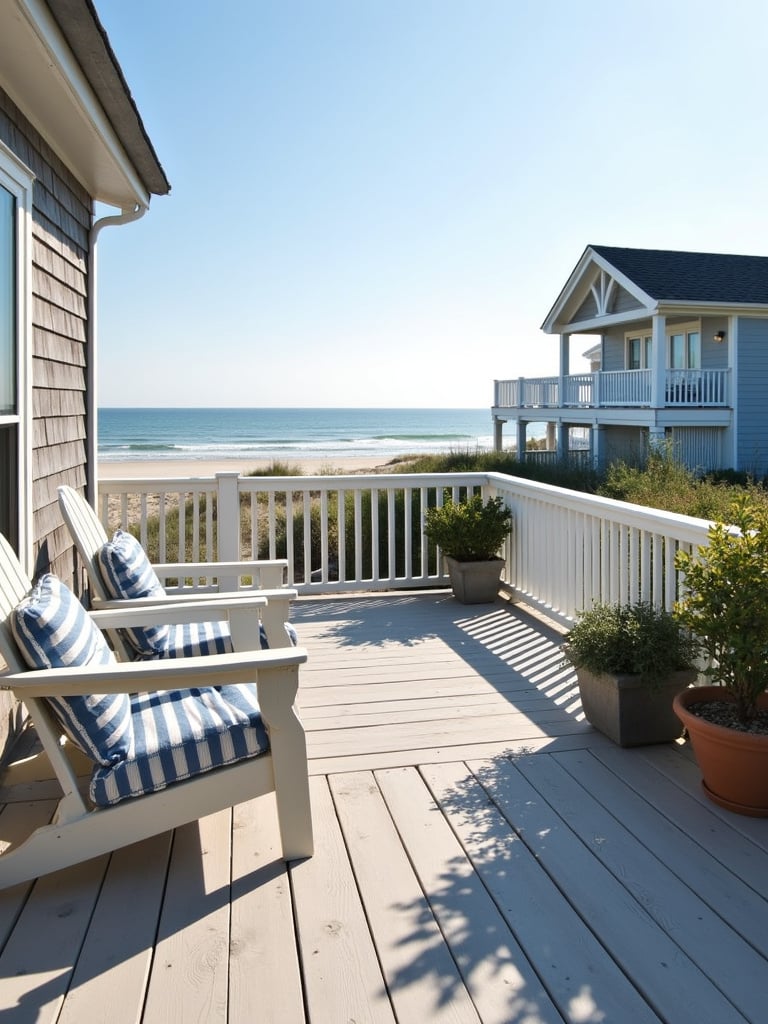
Advanced materials science has transformed traditional picket designs through the development of high-performance composites and coatings. Modern white picket railings can maintain their pristine appearance with minimal maintenance while providing superior weather resistance. Research in outdoor living trends shows that properties featuring white picket railings typically sell 15% faster than comparable properties without this classic feature.
The timeless appeal of white picket railings continues to evolve with modern materials and applications.
The integration of vertical gardens into deck railing ideas represents a cutting-edge approach to biophilic design. Environmental studies demonstrate that living walls can reduce ambient temperature by up to 5°C while increasing local biodiversity. The transformation of railings into living ecosystems creates dynamic boundaries that change with the seasons.
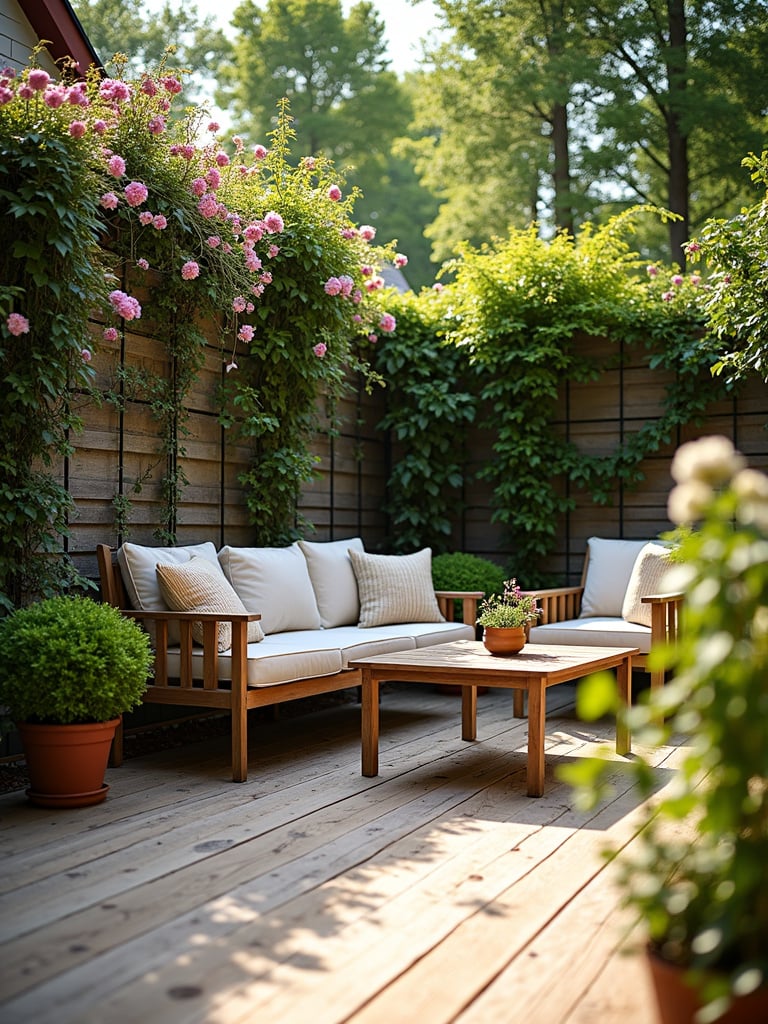
Horticultural research has identified optimal plant combinations for vertical garden railings based on factors such as growth patterns, water requirements, and seasonal interest. Studies in urban greening show that vertical gardens can:
The future of green railing design continues to expand with new plant varieties and support systems.
The extensive research and innovation in deck railing ideas demonstrates the significant impact these design elements have on outdoor living spaces. Studies consistently show that thoughtfully designed outdoor spaces can increase property values by up to 20% while significantly enhancing quality of life. When selecting from these diverse deck railing ideas, consider factors such as:
By carefully evaluating these factors alongside your personal style preferences, you can select a railing design that will provide both beauty and functionality for years to come. Remember that the best deck railing is one that not only meets safety requirements but also enhances your outdoor living experience while reflecting your personal aesthetic vision. As design trends continue to evolve and new materials emerge, the possibilities for creating your perfect outdoor space are endless.